That’s a line ‘little Winthrop’ (aka Ronnie Howard) sings in musical The Music Man and it describes exactly how I feel about Spring. April and May are my #1 favorite months of the year. With late snows and cold temperatures in the 1st week of April, Winter has held it’s tight-fisted grip on us for an extra long time but the final finger has been peeled back and Spring is finally bursting out.
Even though the general landscape doesn’t seem any different, if you look closely, you’ll see little signs of a new season popping up here and there. What are the typical signs you look for? Spring beauties, crocuses, and daffodils blooming, bluebirds scouting out a nesting box and the sandhill cranes flying overhead are some of my favorites. See the bee in the photo below? The presence of insects is another signal that spring has arrived.
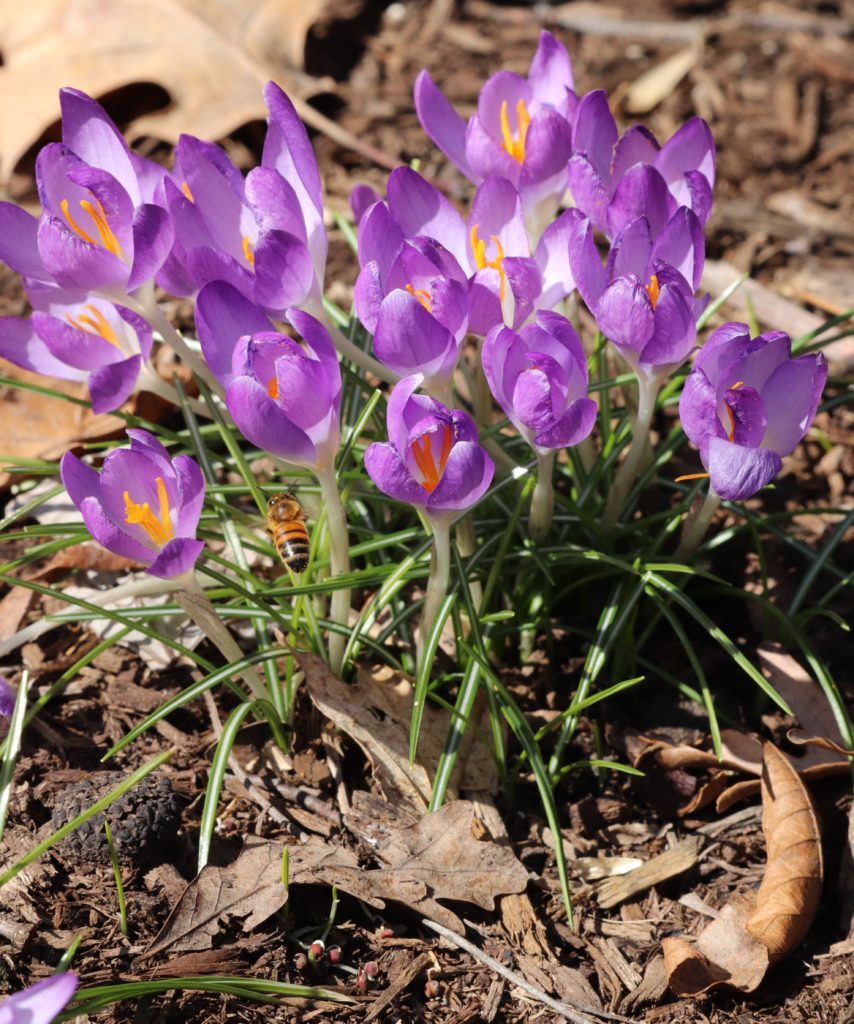
“My favorite weather is bird chirping weather.”
~ Terri Guillemets
Of course, we all love when the robins arrive, scratching in last fall’s leaves for those tasty worms. Our local nature center has a returning leucism robin. It’s not an albino, which is typically all white with pink eyes, but instead a leucism robin has the typical dark eyes, a pale or white back and the red breast. One of her offspring last year was a normal robin color with white spots on its back. I’m hoping to capture a photo of the leucism robin soon but for now here’s a cousin I found in the same area.
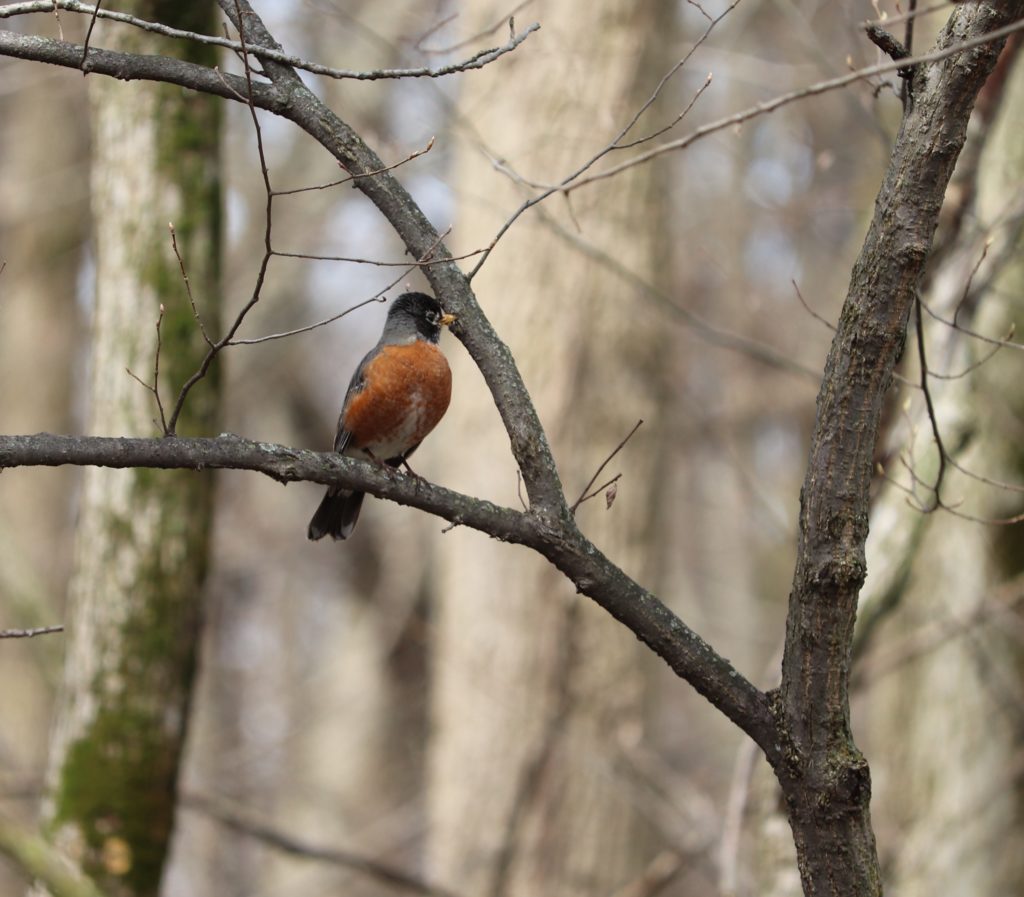
May apples are emerging in the woods and in a matter of days their umbrella-like canopies will unfold. Later will come the Dutchman’s Britches, Anenomes and Jack-in-the-Pulpits. But the only wildflower I found on my walk yesterday was a Spring Beauty. Just a few scattered here and there for now but there will be beds of them sprinkled through the woodland floors in another week or two. Some are striped and a darker pink, but this gem below was so pretty in it’s white/pale pink dress.
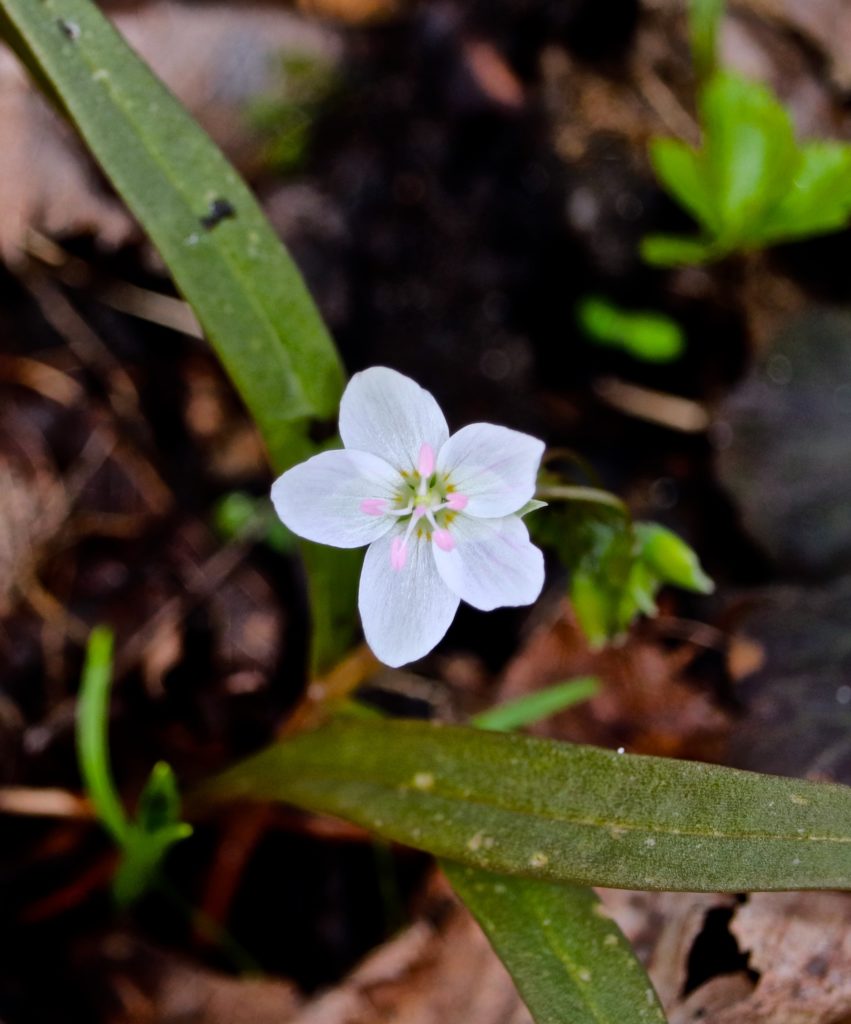
Trillium was one of the first woodland wildflowers my dad taught me to recognize. They have the common name of Toadshade ~ can you see why (below)? They are a special treat to spot on the woodland floor, not as prolific as the spring beauties. White (grandiflorum) trillium are the more common color, but red (erectum) trillium are stunningly beautiful! Another name for them is Wake-Robin, taken from the robin’s red breast which also heralds spring. Even the leaves (always in groups of 3) have an interesting effect. Red trillium have no nectar. However God designed the petals of the red flowers to exude an odor that attract carrion flies and beetles which pollinate the flower. White trillium do have nectar and are pollinated by bees and wasps. Though trillium are not easy to encourage to spread, they do have a long life of 25 years.
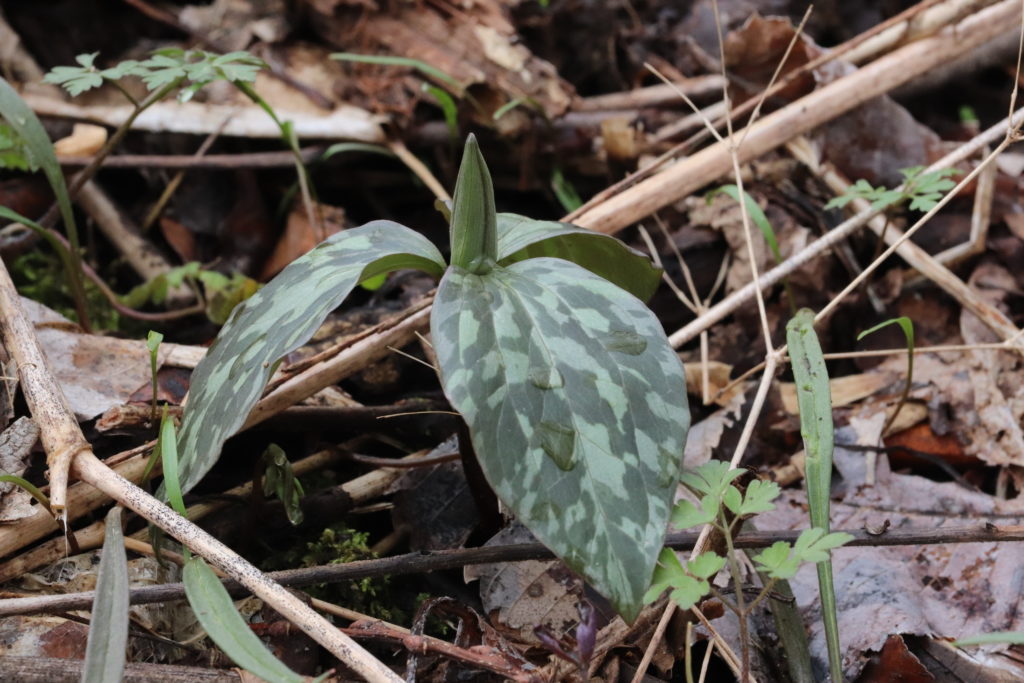
There’s more than meets the eye
I noticed this patch of Bloodroot (Sanguinaria canadensis), in the photo below, along the side of the road. A grim name for such a pretty flower! The Native Americans used the root for medicinal purposes, treating warts and even cancer. If you break the root, a sap pours forth that looks like blood. It even coagulates like blood! But I wouldn’t suggest rubbing it on your hands as 86% of people get nauseous just from absorbing it through the skin. I’m going to enjoy its beauty ABOVE ground.
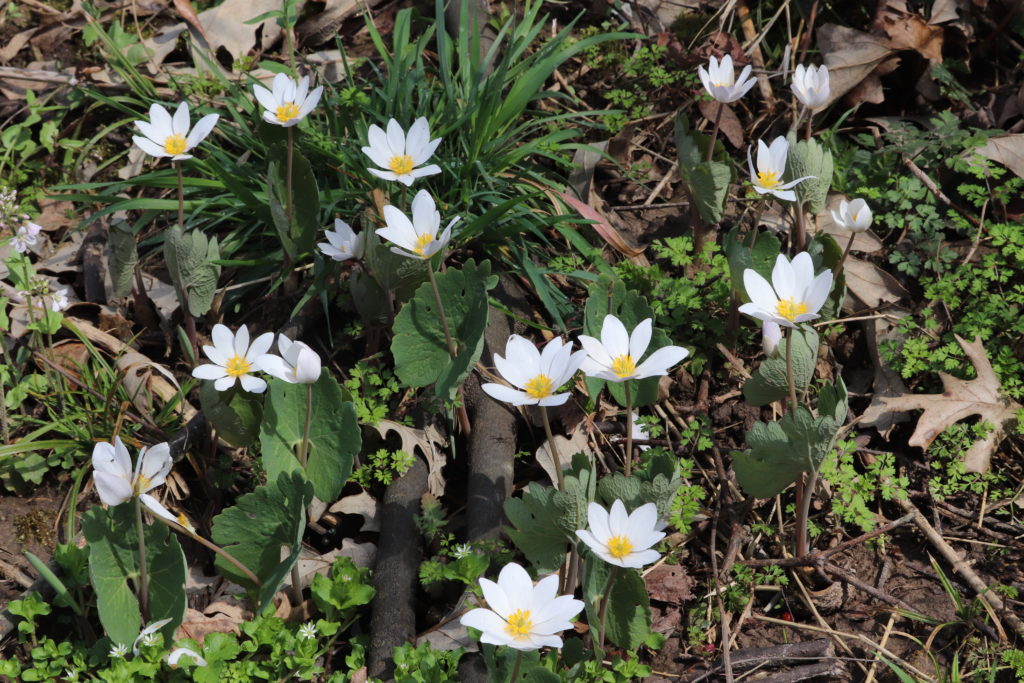
Here’s my latest wildflower fascination: Wood squill or Siberian squill. Despite the name, they are not native to Siberia. Remember my puzzlement in the last blog post over the name of White-fronted geese that do not have white fronts? Same deal with this flower. But in spite of its mistaken origin, aren’t they the sweetest? So delicate and fragile. I found these in the woods at our local nature center but my neighbor has a beautiful carpet of them in the shade of a tree line, both blue and white. They bloom in early April and are gone by the time the grass needs to be mowed.
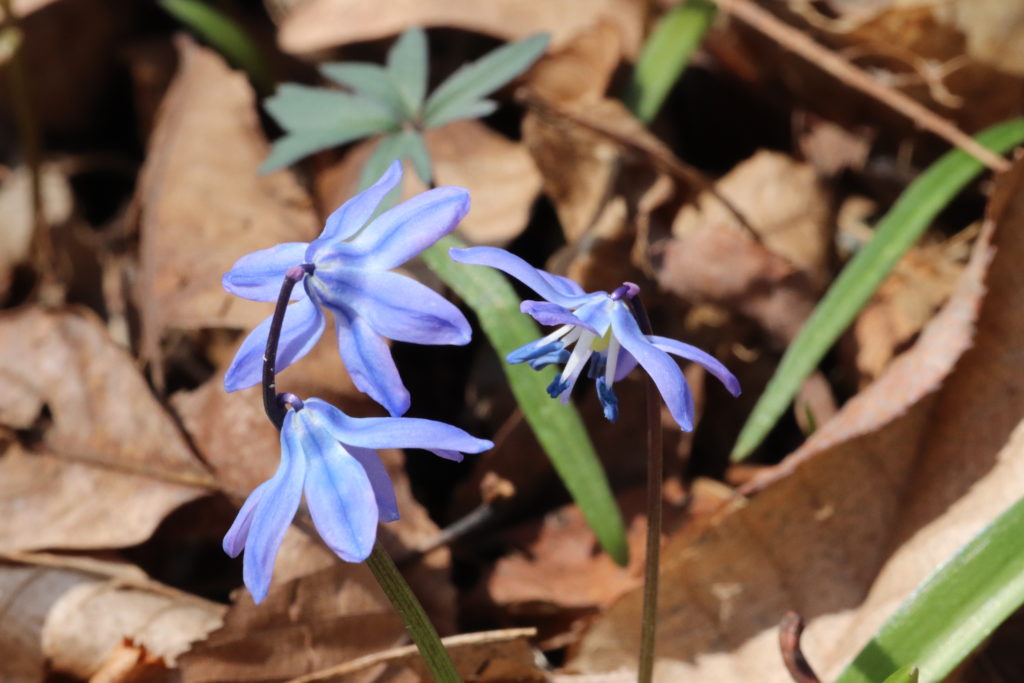
Fire can be good, really!
As I was growing up, another sign of spring was the annual controlled burn of my Dad’s 5 acre native prairie. I remember thinking everything’s going to be black and ugly for years, but how wrong I was! Almost immediately little sprouts of green came up. A burn helps control weeds giving native prairie grasses a competitive advantage, restores nutrients in the soil, and curbs invasion of woody plants. As counter-intuitive as it seems, a burn actually yields better growth and more flowers on native prairies. We live in an area that, historically speaking, was the border of the Eastern hardwood forests and the savannah grass prairies of the Plains. The burn below was done 6 days prior to the photo and already new life was springing up.
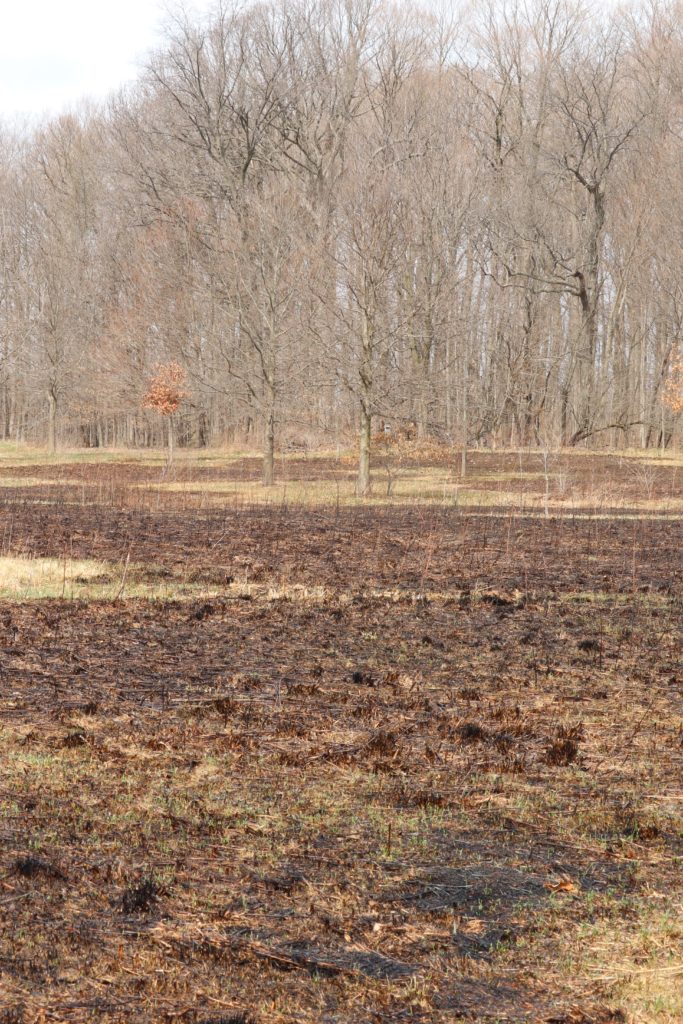
Below you can see the new growth. Depending on the maturity and establishment of the prairie grasses, burns don’t have to happen every year but anywhere between 1-3 years. Lightning would do this naturally on the Great Plains of the US and Canada, but Native Americans learned to aid nature by setting controlled fires. It provided good grazing land for the bison.
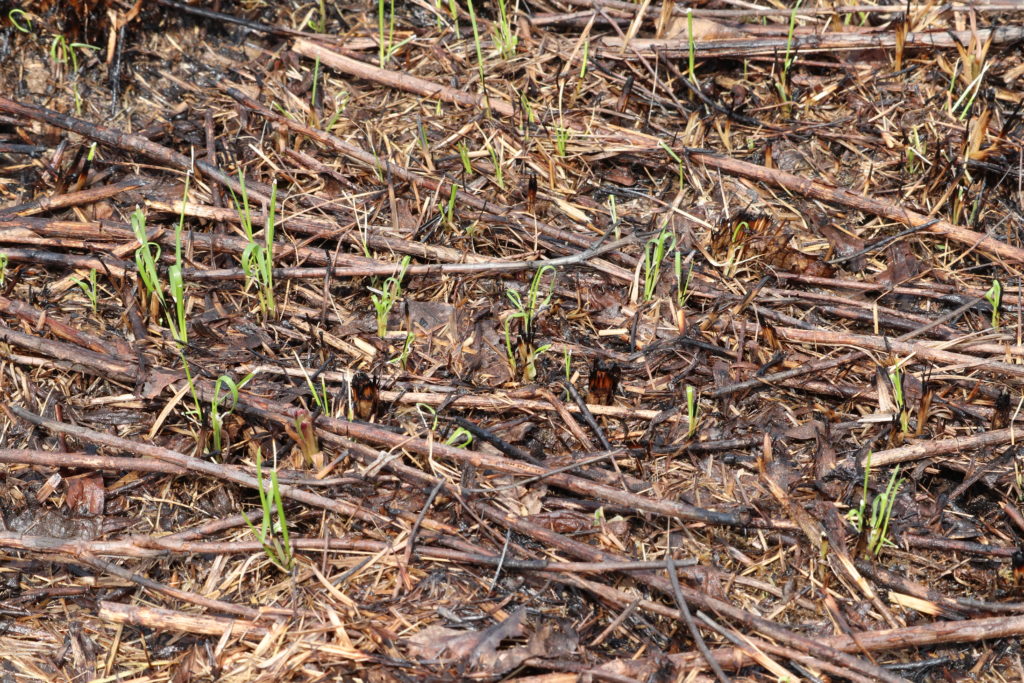
Signs along the water’s edge
I stumbled across the idyllic scene below while out exploring a few weeks ago. Reminded me of a popular song of Bobby Darin’s:
Up A Lazy River by the old mill stream
Lazy river in the noon day sun
Linger awhile in the shade of a tree
Throw away your troubles, dream with me.
Up A Lazy River where the robin’s song
Wakes the mornin’, we roll along.
Make me blue skies above,
Everyone’s in love
Up A Lazy River, how happy we’ll be
Up A Lazy River with me.
~ song by Hoagy Carmichael and Sidney Arodin, published in 1930
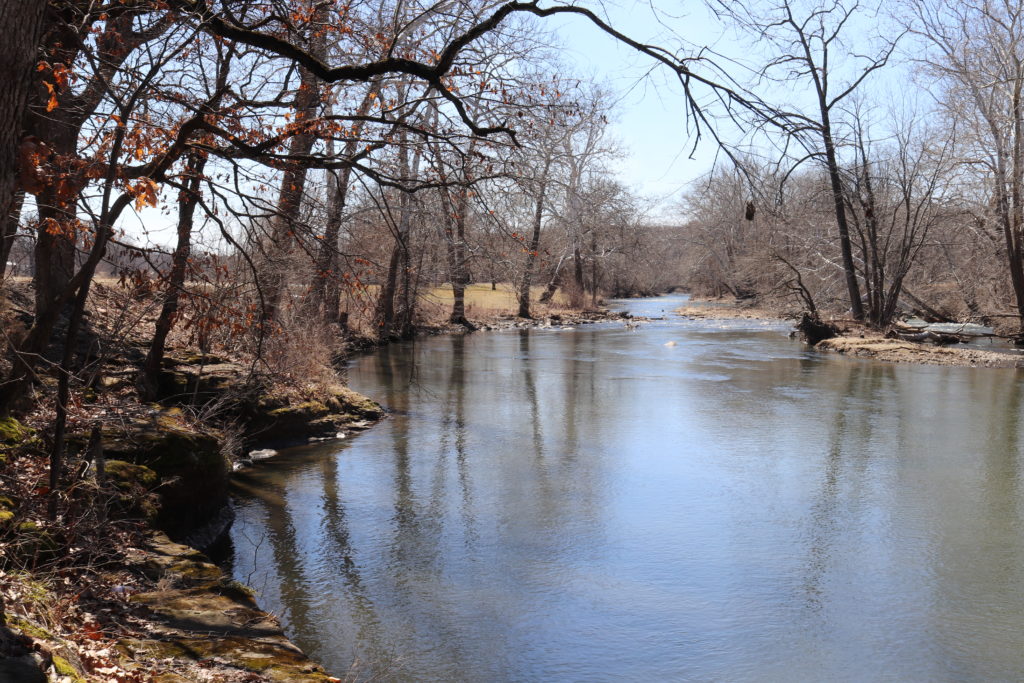
Another sign of spring is the emergence of the reptiles and amphibians. On a hike a week ago, we startled a garter snake (or should I say, the snake startled my daughter!) as he scooted across the trail. I have heard bull frogs as well as spring peepers. Yesterday I found a bale of turtles. Did you know a group of turtles was called a BALE?? New to me, too! Here’s just one, unless you count his reflection too! (Eastern box turtle).
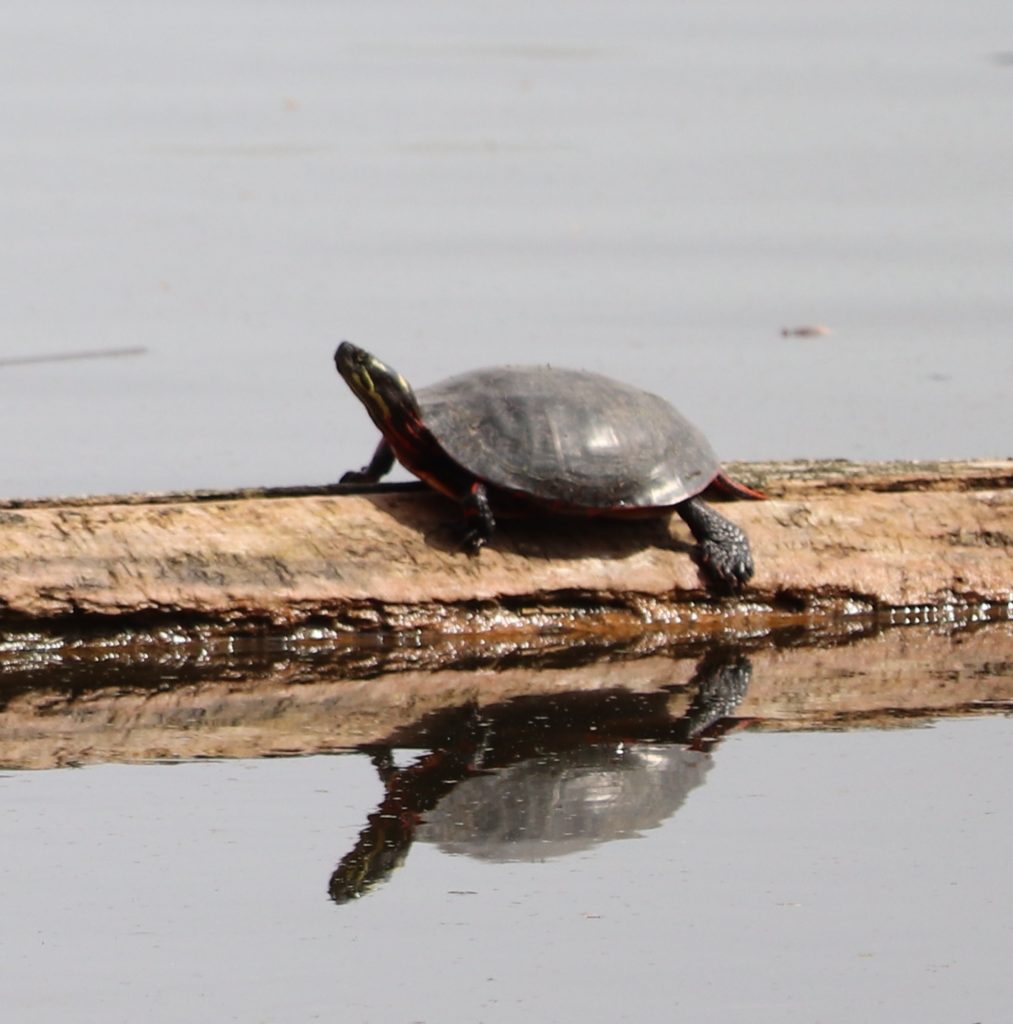
Sometimes just standing in one spot is worth the patience. I was doing just that trying to get a photograph of ducks when I turned ever so slightly to one side and saw fur through the willows. Inching very slowly to get a better view, I saw a muskrat staring back at me! For a rodent, he’s cute! This was a large enough lake that a few muskrats won’t disrupt the ecosystem. But depending on the size of a pond, muskrats can take it over, eating all the vegetation and burrowing holes in the banks. Muskrats do not build dams or fell trees as beavers do. They either burrow in the banks or construct reed huts above the water level with an underwater exit.
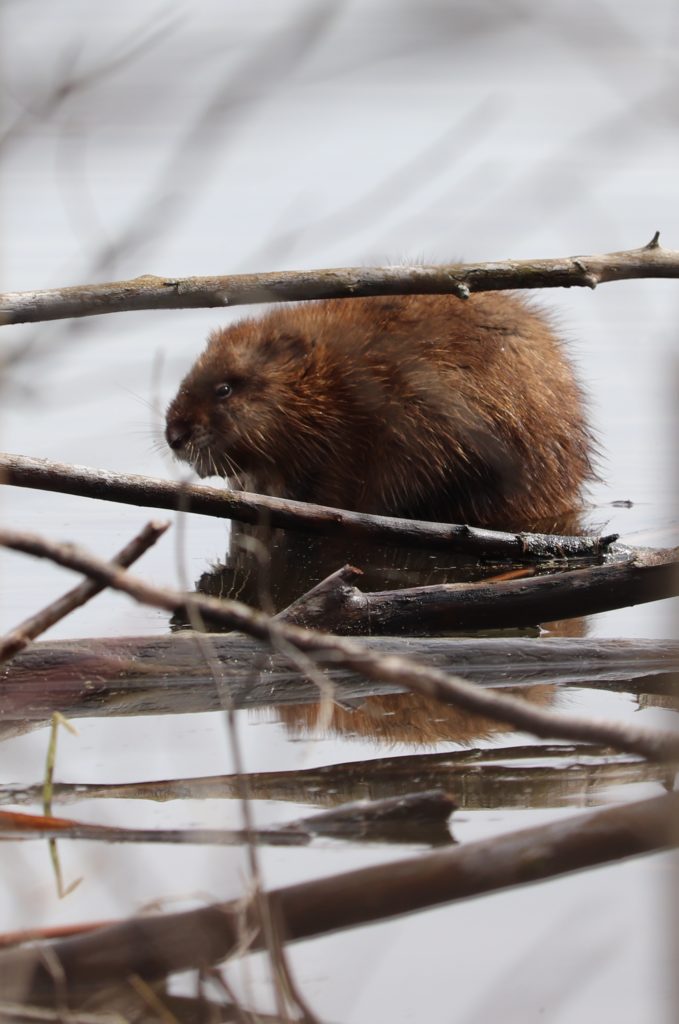
Pièce de Résistance
This was the creme de la creme for me thus far this spring! A Myrtle warbler (also known as a yellow-rumped warbler) was flitting around from branch to branch . . . literally! He would NOT hold still and it was difficult to get a photo of him. But worth all the effort! Warblers are very elusive and a real discovery when you get a glimpse of one. Typically they are very colorful too.

Blooming dogwoods, apple trees, forsythia, red buds, baby geese, fawns, orioles, red breasted grosbeaks and the arrival of hummingbirds is yet all to come. Personally speaking, I like Spring even more than Christmas! Wondrous gifts and surprises keep arriving for weeks!
Let me know in the comments what you enjoy the most this time of year and what you are seeing as you explore the wonder of spring. I truly love hearing from you. And don’t forget, get outside!!
Catch ya’ all later,
Carolyn
Please add your email address below to be notified when a new post comes out! This is a private list and will not be shared.
Nice catch on the muskrat and warbler! We had muskrats in the pond when we first bought our house and got rid of them quickly since it’s so small. Most of our trees are budding out in Central Ohio and I have seen some flowers, especially around OSU. It’s so nice to be outside more again wi the kids. I love the spring afternoons playing with them after I get home from work 🙂 the best!
Amanda, thank you. I too was pleased to get both those shots. Your area must be 4-7 days ahead of us – the only trees with buds ready to pop here are the cherry trees. Everything else looks like December 🙁 But you’ve given me hope it’s around the corner!
So interesting Carolyn, & as always, your photos are exquisite! The muskrat is
perfectly ” framed ” in wood! I look forward to your next outside adventures &
discoveries!!!
I learn something new every time I read your posts! This time it was that a group of turtles is called a bale! I never would have thought that. I loved your picture of the warbler. So beautiful and something you don’t see every day! And the picture of the blood root was beautiful too. I had not idea that 86% of people get nauseous just from absorbing it through their skin! I used to do that all the time when I played in the woods. 😉 As always, your way of weaving facts and telling stories into your writing is fun to read and learn about! Keep up the awesome work!